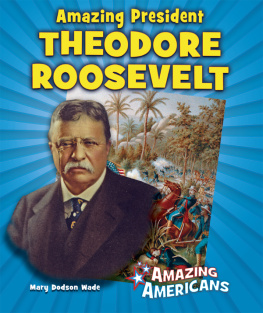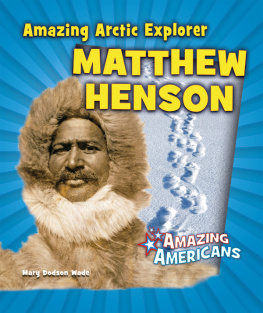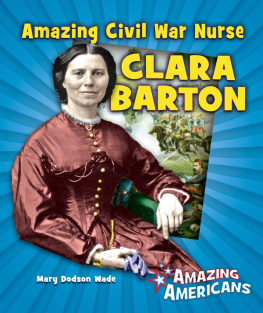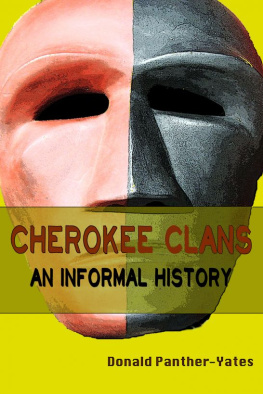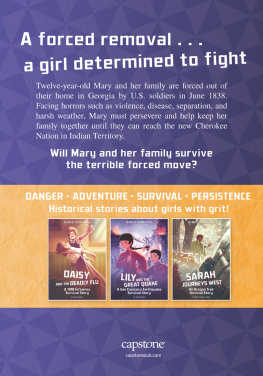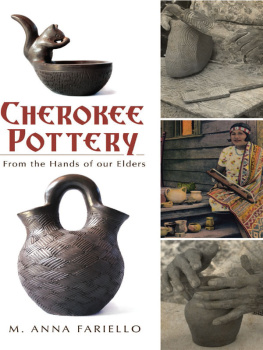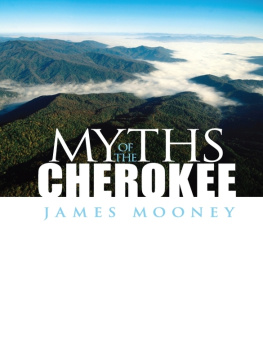Amazing Cherokee Writer
Read about Sequoyahthe person who gave the Cherokees the gift of reading and writing.
Young readers will learn just how amazing some Americans are as they pore over the pages of these biographies.
Allan A. De Fina, PhD, Series Literacy Consultant, Dean, College of Education/Professor of Literacy Education, New Jersey City University, Past President of the New Jersey Reading Association
This little biography of Sequoyah contains enough information to interest its intended audience. If it piques a students interest enough so that he or she seeks out additonal books on Sequoyah, thats its lagniappe.
Cathy S. Monholland, Instructional Designer, Cherokee Nation
About the Author
Author Mary Dodson Wade is a book lover, a people watcher, and a compulsive writer. She spent 25 years as an elementary librarian, surrounded by things she loved.
Sequoyah (Sah-KWA-yuh) was born around 1776 in Tennessee. He was a Cherokee Indian. As an adult, he did not know how to read or write. Sequoyah invented letters and symbols for Cherokee words. He changed the lives of his people forever.

Image Credit: Oklahoma State Capitol
Sequoyah created a way for the Cherokee people to write.
Sequoyah grew up to become a silversmith. He wanted to sign the pieces he made. A friend showed Sequoyah how to write his name in English.

Image Credit: Marilyn Angel Wynn/Nativestock
These buildings are near where people think Sequoyah was born.
Sequoyah saw American soldiers looking at papers. There were marks on the papers that the soldiers could read. Sequoyah called these papers talking leaves.
Sequoyah wanted to make talking leaves for Cherokee words. He began to write symbols on paper and pieces of wood. Soon he realized he could not think of enough marks for each word.

Image Credit: Research Division of the Oklahoma Historical Society
This is the inside of Sequoyahs cabin in Oklahoma.
He moved to a cabin in the woods to work on his list of words. His fields became full of weeds. His wife became angry. One day she burned up all of his writing. Sequoyah started again.
Then he got an idea from a childrens book in English. It used only 26 marks to make all the words. Sequoyah listened to Cherokees speak. This time he made a mark for each sound he heard. After 12 years he finished the syllabary. It was made up of 85 marks.

Image Credit: 2008 Jupiterimages Corp
Sequoyah worked hard to create a written language for the Cherokee people.
Sequoyah showed the alphabet to leaders of his tribe. His daughter Ahyoka was able to read the words. At first the leaders thought he had used magic.
But the syllabary was simple. People could learn it in a week. Soon, nearly every Cherokee could read books and newspapers. The Cherokee leaders gave wise Sequoyah a medal.

Image Credit: Marilyn Angel Wynn/Nativestock
Sequoyah taught his daughter how to read.
When the United States wanted to take the Cherokee land, Sequoyah was chosen to go to Washington, D.C. The United States made the Cherokees move. Sequoyah helped his people move to Oklahoma.

Image Credit: The WOOLAROC MUSEUM, Bartlesville, OK
Sequoyah went with the Cherokee people when they were forced to move to Oklahoma.
Sequoyah was more than 70 years old when he went to Mexico to search for other Cherokees. He died there in 1843.

Image Credit: Library of Congress, Prints and Photographs Division
Sequoyah would teach his syllabary to any Cherokee who wanted to learn it.
Sequoyah gave Cherokees the gift of reading and writing. His hard work helped preserve the Cherokee language forever.

Image Credit: Billy E. Barnes/Photo Edit
Today, people still learn Sequoyahs syllabary.
Sequoyahs syllabary was easy to learn.
The marks stood for sounds. It works like this:
You want to tell your friend, I see you. You write, I C U.
Can you think of other marks that stand for words?
The giant sequoia trees are named for Sequoyah.
Why do you think that is a good way to honor him?
Sequoyah invented a way for Cherokees to read.
What would you like to invent? Why?
1770?
Born in a Cherokee village in Tennessee. Nobody knows the real year.
1815
Married Sally Waters and lived in Alabama
1821
Daughter Ahyoka helped show the syllabary to Cherokee leaders
1824
Moved his family west
1828
Went to Washington to try to help the Cherokees settle problems about their land
1829
Built a cabin in Sallisaw, Oklahoma
1843
Died in Mexico.
preserveTo keep.
silversmithSomeone who makes or fixes things made of silver.
soldiersA person who serves in an army.
soundsSomething you hear.
syllabaryA list of marks that stand for sounds.
Dennis, Yvonne Wakim. Sequoyah, 1770?1843. Mankato, MN: CapstonePress/Blue Earth Books, 2004.
Rumford, James. Sequoyah: the Cherokee Man Who Gave his People Writing. Boston: Houghton Mifflin Co., 2004.
Shaughnessy, Diane and Jack Carpenter. Sequoyah, Inventor of the Cherokee Language. New York: Power Kids Press, 1998.
Waxman, Laura Hamilton. Sequoyah. Minneapolis, MN: Lerner, 2004.
http://www.sequoyahmuseum.org/, Sequoyah Birthplace Museum, Vonore, TN 37885
Cherokee National Museum
Tsa-La-Gi Cherokee Heritage Center
Tahlequah, OK 74465
Sequoyah Home Site, with log cabin home built in 1829.
State Route 101
Sallisaw, OK 74955
A
Ahyoka (daughter), 13
alphabet, 9, 10, 13
Arkansas, 14
C
Cherokee, 5, 9, 10, 13, 14, 17, 18
M
Mexico, 17
O
Oklahoma, 14
S




